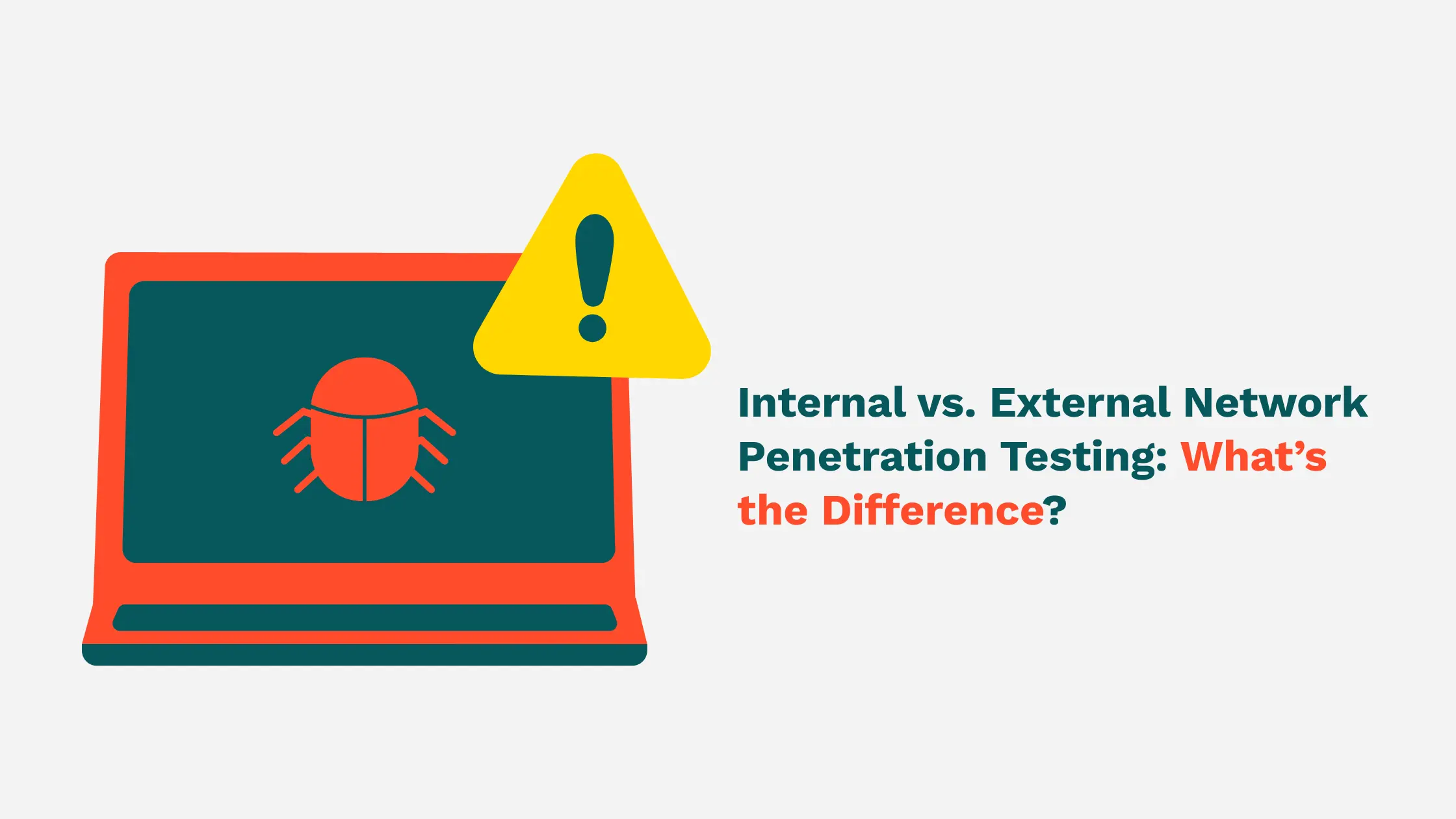
In today’s threat landscape, cyberattacks are becoming more frequent, sophisticated, and costly. From ransomware and phishing to insider threats, no business is immune.
That’s why understanding internal vs external network penetration testing is crucial for any organization looking to strengthen its cybersecurity posture.
This article explains the differences between external and internal penetration testing, when to utilize each, and why combining both approaches is essential for a comprehensive defense strategy.
External penetration testing simulates a cyberattack launched from outside your organization’s network, similar to how a real-world hacker would attempt access.
The primary purpose is to test perimeter defenses, identify vulnerabilities in internet-facing systems, and ensure attackers cannot gain unauthorized access.
External threats remain the most common form of attack. If your external systems are not secure, cybercriminals can find a way in, putting your entire network at risk.
Conducting external network penetration testing helps uncover weaknesses before attackers exploit them, reducing the likelihood of costly breaches.
Internal penetration testing simulates an attack that originates from inside your network. This could involve a malicious insider, a compromised employee device, or an external attacker who has bypassed perimeter defenses through phishing or malware.
The goal is to determine what an attacker can access and accomplish once inside your environment.
Even the strongest perimeter defenses can be bypassed. Internal network penetration testing helps organizations understand the potential damage an attacker can inflict once inside, assess exposure of sensitive data, and validate whether existing defenses can detect and contain breaches effectively.
.webp)
ioSENTRIX Approach to Internal vs External Penetration Testing
The short answer is both. While external penetration testing protects your internet-facing assets, internal testing identifies vulnerabilities that could be exploited once an attacker is inside.
A mature cybersecurity program incorporates both to achieve full coverage.
By comparing network pentesting perimeter vs internal, organizations can gain a comprehensive view of their cybersecurity posture.
Cybercriminals often combine external and internal attack techniques. A typical attack may start with breaching the external perimeter and then move laterally within the network to escalate privileges or access sensitive data.
Performing both internal and external penetration testing allows organizations to:
For organizations pursuing or maintaining ISO 27001 compliance, penetration testing is essential.
ioSENTRIX offers tailored ISO 27001 penetration testing services, including compliance-oriented assessments and realistic threat simulations, ensuring both certification readiness and practical cyber resilience.
At ioSENTRIX, our cybersecurity experts specialize in internal vs external network penetration testing.
We follow industry-standard frameworks such as OWASP, MITRE ATT&CK, and NIST to deliver accurate, actionable results.
Our services help organizations:
Every engagement is customized to your environment, ensuring that whether you need external network penetration testing for new applications or internal network penetration testing to simulate insider threats, coverage is comprehensive and precise.
ioSENTRIX has extensive experience protecting organizations from both internal and external threats.
Our security team uses a mix of advanced tools, manual testing, and threat simulation techniques to uncover vulnerabilities before attackers can exploit them.
For businesses seeking complete visibility, the solution is not choosing between internal or external tests, it is using both in tandem.
Conducting network pentesting perimeter vs internal allows organizations to proactively address risks and secure every potential entry point.
Contact us today to schedule a consultation and learn how ioSENTRIX can strengthen your cybersecurity defenses.
1. What is the main purpose of internal penetration testing?
The main purpose of internal penetration testing is to identify and exploit vulnerabilities inside a network that could allow an attacker to move laterally or escalate privileges. It ensures the resilience of internal systems against insider threats.
2. How often should a company perform external penetration testing?
External penetration testing should be conducted at least once per year or after significant infrastructure changes, as recommended by ISO 27001 and PCI DSS standards.
3. Can small businesses benefit from penetration testing?
Yes. Small businesses are frequent targets of automated attacks. Regular penetration testing helps identify misconfigurations in firewalls, web apps, and cloud settings before they are exploited.
4. What is the difference between vulnerability scanning and penetration testing?
Vulnerability scanning detects known issues automatically, while penetration testing involves manual exploitation to determine actual risk and business impact.
5. Does ioSENTRIX offer continuous testing?
Yes. ioSENTRIX offers Penetration Testing as a Service (PTaaS) that allows clients to track vulnerabilities, get real-time remediation guidance, and request retests directly through a secure portal.
Understanding internal vs external network penetration testing is essential for any organization striving to enhance its security posture.
External testing protects internet-facing systems, while internal testing evaluates risks that exist within your network. Both are complementary and indispensable.
By implementing a strategy that includes external network penetration testing alongside internal network penetration testing, organizations can reduce risk, meet compliance, and achieve long-term resilience.